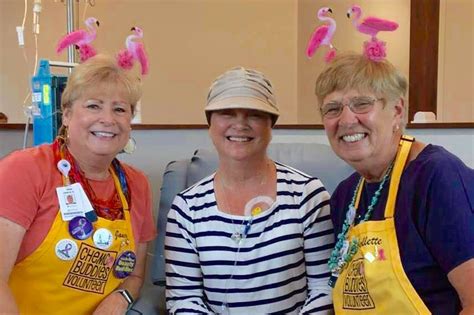
A senior Yorkshire Terrier named Teddy has captivated the internet with his unwavering demand for a nightly cuddle session with his owner, showcasing a heartwarming routine that highlights the special bond between humans and their pets.
The endearing ritual, documented and shared on social media by Teddy’s owner, has garnered widespread attention, resonating with pet lovers worldwide. The videos depict Teddy’s persistent yet gentle nudging and pawing until his owner acquiesces, resulting in a snuggle session that has become a cherished part of both their lives. The owner, whose social media handle is @teddybeargrams, initially started posting videos of Teddy for friends and family but quickly realized the broader appeal of their nightly ritual.
“He just started doing this one day,” the owner stated in one of her posts. “Now, if I try to go to bed without cuddling him, he gets very upset.” This nightly persistence underscores not only Teddy’s affection but also the comforting routine that has formed, providing both pet and owner with a sense of security and companionship.
Teddy, despite his senior status, displays a remarkable zest for life and an unwavering determination to maintain his cuddle routine. This highlights the importance of providing elderly pets with the care, attention, and affection they need to thrive in their golden years.
The viral videos featuring Teddy have prompted an outpouring of supportive comments and personal anecdotes from pet owners who have experienced similar bonds with their furry companions. This serves as a testament to the universal appeal of the human-animal bond and the profound impact pets have on our lives. The story also underscores the increasing use of social media platforms to share heartwarming content, foster communities, and celebrate the joys of pet ownership.
The Heartwarming Details of Teddy’s Routine
Teddy’s cuddle routine is not a passive request but a deliberate and endearing series of actions designed to elicit the desired response from his owner. As bedtime approaches, Teddy begins his subtle campaign, starting with gentle nudges and increasingly insistent pawing at his owner’s arm or leg. These aren’t aggressive demands, but rather affectionate prompts that convey his desire for physical closeness.
If the initial nudges are unsuccessful, Teddy escalates his efforts, often resorting to a series of soft whines and plaintive looks that are difficult to resist. His owner explains that he understands the timing perfectly, knowing precisely when bedtime is nearing and initiating his routine with uncanny accuracy. This level of understanding highlights the cognitive abilities of dogs and their capacity to learn and adapt to human routines.
Once his owner relents, Teddy immediately settles in for his cuddle session, nestling closely and often resting his head on her chest or shoulder. The owner describes the feeling as incredibly comforting, noting that Teddy’s presence helps her unwind after a long day. The physical contact releases oxytocin, a hormone associated with bonding and relaxation, in both Teddy and his owner, further strengthening their connection.
The duration of the cuddle session varies, but it typically lasts for at least 15 to 20 minutes, providing ample time for both Teddy and his owner to enjoy the benefits of physical closeness. During this time, Teddy often drifts off to sleep, secure in the knowledge that he is loved and protected.
The Importance of Routine for Senior Pets
Teddy’s cuddle routine exemplifies the importance of establishing and maintaining routines for senior pets. As animals age, they often experience cognitive decline, which can lead to anxiety and disorientation. A consistent routine provides a sense of stability and predictability, helping to alleviate these anxieties and promote a feeling of security.
In Teddy’s case, his nightly cuddle routine serves as a comforting ritual that signals bedtime and provides him with reassurance. This is particularly important for senior dogs who may be experiencing age-related changes in their physical and mental abilities.
Beyond the emotional benefits, routines also help senior pets maintain their physical health. Regular feeding times, walks, and playtime can help them stay active and engaged, preventing muscle loss and maintaining their overall well-being.
Veterinarians often recommend establishing a consistent daily routine for senior pets, including regular feeding times, exercise, grooming, and playtime. This can help them stay healthy, happy, and comfortable in their golden years.
The Science Behind the Human-Animal Bond
The bond between humans and animals is a complex and multifaceted phenomenon that has been studied extensively by scientists. Research has shown that interacting with pets can have a profound impact on our physical and mental health, reducing stress, lowering blood pressure, and boosting our immune system.
One of the key factors driving this bond is the release of oxytocin, a hormone that plays a crucial role in social bonding and attachment. When humans and animals interact, particularly through physical touch such as cuddling, oxytocin levels rise, promoting feelings of love, trust, and connection.
Studies have also shown that pet owners tend to be more physically active and socially engaged than non-pet owners. This is partly due to the responsibility of caring for a pet, which requires regular exercise and interaction with other pet owners.
Furthermore, pets provide companionship and emotional support, particularly during times of stress or loneliness. They offer unconditional love and acceptance, which can be incredibly valuable for individuals who are struggling with mental health issues or social isolation.
The story of Teddy and his cuddle routine serves as a powerful reminder of the profound impact pets have on our lives and the importance of nurturing the human-animal bond.
Social Media’s Role in Amplifying Heartwarming Stories
The internet, particularly social media platforms, has played a significant role in amplifying Teddy’s heartwarming story, allowing it to reach a global audience. The owner’s decision to share videos of Teddy’s cuddle routine on social media transformed a personal moment into a shared experience, resonating with pet lovers worldwide.
Social media platforms provide a unique space for pet owners to connect, share stories, and celebrate the joys of pet ownership. The hashtag #dogsofinstagram, for example, has millions of posts featuring adorable dogs from around the world, creating a vibrant online community of pet enthusiasts.
The viral nature of Teddy’s story highlights the power of social media to spread positive and uplifting content. In a world often dominated by negative news, heartwarming stories like Teddy’s offer a welcome respite, reminding us of the simple joys in life and the importance of human connection.
Moreover, social media can be a powerful tool for raising awareness about animal welfare issues and promoting responsible pet ownership. By sharing stories of rescue animals, for example, pet owners can inspire others to adopt or foster animals in need.
The Yorkshire Terrier Breed: A Profile
Understanding Teddy’s breed, the Yorkshire Terrier, provides further context to his charming behavior. Yorkshire Terriers, often called Yorkies, are a small, toy breed known for their affectionate and intelligent nature. Despite their diminutive size, they possess a bold and spirited personality, making them popular companions.
Originating in Yorkshire, England, during the 19th century, these dogs were initially bred to catch rats in clothing mills and mines. Their small size and agility made them well-suited for this task. However, their beautiful silky coat and affectionate temperament soon made them popular as lap dogs and companions of wealthy families.
Yorkies are known for their loyalty and devotion to their owners, often forming strong bonds with their human families. They are intelligent and eager to please, making them relatively easy to train. However, they can also be independent and stubborn, requiring consistent and positive reinforcement training methods.
Despite their small size, Yorkies require regular exercise to stay healthy and happy. Daily walks and playtime are essential for maintaining their physical and mental well-being. They also require regular grooming to maintain their silky coat, which can be prone to matting and tangling.
Yorkshire Terriers typically have a lifespan of 12 to 15 years, making them a long-term commitment for pet owners. They are generally healthy dogs, but they can be prone to certain health conditions, such as patellar luxation (dislocation of the kneecap) and tracheal collapse.
Teddy’s affectionate behavior and his unwavering demand for cuddles are characteristic of the Yorkshire Terrier breed, highlighting their loving and devoted nature.
Caring for Senior Dogs: A Guide
As dogs age, their needs change, and it is important to provide them with the care and attention they need to thrive in their senior years. Caring for a senior dog involves several key considerations, including diet, exercise, veterinary care, and environmental adjustments.
Diet: Senior dogs often require a special diet that is lower in calories and higher in fiber to help maintain a healthy weight and prevent constipation. It is important to consult with a veterinarian to determine the best diet for your senior dog based on their individual needs and health conditions.
Exercise: While senior dogs may not be able to exercise as vigorously as younger dogs, they still need regular physical activity to stay healthy and engaged. Gentle walks, playtime, and swimming are all good options for senior dogs. It is important to adjust the intensity and duration of exercise based on your dog’s physical abilities and limitations.
Veterinary Care: Senior dogs require more frequent veterinary checkups to monitor their health and detect any potential problems early on. Regular blood tests, urine tests, and physical examinations can help identify age-related conditions such as arthritis, kidney disease, and heart disease.
Environmental Adjustments: Senior dogs may require adjustments to their environment to make them more comfortable and safe. This may include providing them with orthopedic beds to cushion their joints, ramps to help them navigate stairs, and non-slip flooring to prevent falls.
Mental Stimulation: Senior dogs still need mental stimulation to stay engaged and prevent cognitive decline. Puzzle toys, training exercises, and social interaction can all help keep their minds sharp.
Comfort and Affection: Above all, senior dogs need love, attention, and affection. Spending time with your senior dog, cuddling, and talking to them can provide them with comfort and reassurance.
Teddy’s story underscores the importance of providing senior pets with the care, attention, and affection they need to thrive in their golden years.
The Broader Implications of Pet Ownership
The popularity of Teddy’s story highlights the broader implications of pet ownership in modern society. Pets are increasingly recognized as important members of our families, providing companionship, emotional support, and a sense of purpose.
Studies have shown that pet owners tend to be happier, healthier, and more socially connected than non-pet owners. Pets can help reduce stress, lower blood pressure, and boost our immune system. They also provide opportunities for social interaction and physical activity.
Furthermore, pets can play a valuable role in the lives of children, teaching them responsibility, empathy, and compassion. Children who grow up with pets tend to be more emotionally well-adjusted and have higher self-esteem.
The increasing recognition of the benefits of pet ownership has led to a growing demand for pet-friendly housing, workplaces, and public spaces. More and more businesses are allowing employees to bring their pets to work, recognizing the positive impact they can have on morale and productivity.
The story of Teddy and his cuddle routine serves as a reminder of the profound impact pets have on our lives and the importance of creating a society that values and supports pet ownership.
The Economic Impact of the Pet Industry
The pet industry is a multi-billion dollar industry that continues to grow each year. Pet owners spend significant amounts of money on food, supplies, veterinary care, grooming, and other services for their pets.
The economic impact of the pet industry extends beyond direct spending on pet-related products and services. Pet ownership also contributes to the economy through tourism, real estate, and other related industries.
Pet-friendly hotels and resorts are becoming increasingly popular, catering to pet owners who want to travel with their furry companions. The demand for pet-friendly housing has also led to an increase in the development of pet-friendly apartments and condominiums.
Furthermore, the pet industry provides employment opportunities for veterinarians, groomers, trainers, pet sitters, and other professionals.
The continued growth of the pet industry reflects the increasing importance of pets in our lives and the willingness of pet owners to spend money on their well-being.
Conclusion: A Testament to Unconditional Love
Teddy’s story is more than just a viral video; it’s a testament to the unconditional love and unwavering bond that exists between humans and their pets. His nightly demand for cuddles is a simple yet profound expression of affection that has resonated with millions of people around the world. It reminds us of the joy, comfort, and companionship that pets bring into our lives and the importance of cherishing these special relationships. Teddy’s story also highlights the importance of providing senior pets with the care, attention, and affection they need to thrive in their golden years. By sharing his story, Teddy’s owner has not only brought joy to countless people but has also raised awareness about the importance of responsible pet ownership and the profound impact pets have on our lives. The enduring appeal of Teddy’s routine speaks volumes about the power of love, connection, and the simple joys that make life worth living.
Frequently Asked Questions (FAQs)
-
What breed is Teddy, and how old is he?
- Teddy is a senior Yorkshire Terrier. While the specific age isn’t detailed in the source article, the article consistently refers to him as a “senior pup.” This implies he is in the later years of a Yorkie’s typical lifespan, which is generally between 12 and 15 years.
-
What exactly does Teddy do to initiate his cuddle routine?
- According to his owner’s posts (referenced in the article), Teddy starts with gentle nudges and pawing, escalating to soft whines and plaintive looks if his initial attempts are unsuccessful. He is persistent in his pursuit of cuddles before bedtime.
-
Why is routine so important for senior dogs like Teddy?
- Routine provides stability and predictability, especially crucial for senior dogs who may experience cognitive decline or anxiety. It offers a sense of security and comfort, helping to alleviate disorientation and promote overall well-being.
-
What are some key considerations when caring for a senior dog?
- Key considerations include adjusting their diet to be lower in calories and higher in fiber, providing regular but gentle exercise, ensuring frequent veterinary checkups to monitor their health, making environmental adjustments for comfort and safety (orthopedic beds, ramps, non-slip flooring), and providing ample mental stimulation and affection.
-
How has social media impacted the reach of Teddy’s story?
- Social media has played a significant role in amplifying Teddy’s story, allowing it to reach a global audience. The owner’s shared videos transformed a personal moment into a widely celebrated example of the human-animal bond, highlighting the power of social media to spread positive and heartwarming content.









